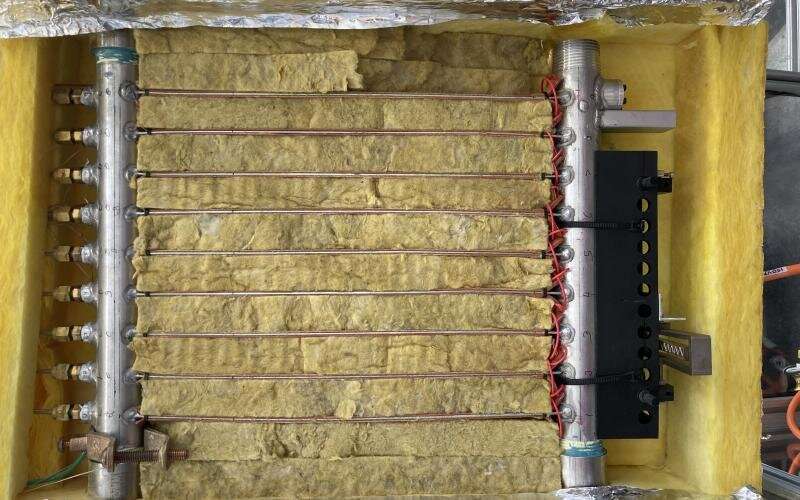Keeping refrigerants flowing steadily in HVAC units

Oak Ridge National Laboratory researchers have demonstrated that microchannel heat exchangers in heating, ventilation and air conditioning units can keep refrigerants evenly and continually distributed through the insertion of a device called a piezoelectric-driven magnetic actuator, or PEDMA.
Heat exchangers are shells or pipes that use metal tubing to transfer heat from one place to another. In contrast, a microchannel exchanger uses a maze of smaller pathways, making it low weight and lower cost while providing superior performance. However, these small channels can cause refrigerant maldistribution, putting extra pressure on the compressor.
In a study, the team developed a prototype PEDMA insert consisting of 3D-printed resin parts and small permanent magnets.
"The magnets work to actively change the geometry inside the exchanger once inserted into the equipment," ORNL's Joseph Rendall said. "Testing showed significant improvement of refrigerant flow. This represents a new method for controlling flow distribution in microchannel heat exchangers."
More information: Joseph Rendall et al, Experimental results of a magnetically coupled piezoelectric actuator to relieve microchannel heat exchanger maldistribution, International Communications in Heat and Mass Transfer (2022). DOI: 10.1016/j.icheatmasstransfer.2022.105944


















